People collect single playing cards (also known as swap cards) like others collect postcards, stamps or baseball cards and put them into similar albums for display.
There are many types of playing cards to collect ranging from the antique wide playing cards (produced up to early c1900's) right through to the more modern. Common categories collected are wides, art deco/nouveau, cats, dogs, horses, glamour girls/pin-ups, birds, flowers, butterflies, fairies, people, adverts, artworks/artists etc etc.
"Wide"
Refers to cards that are not the standard 6cm x 9cm playing card size. This is because they are either modern poker cards or pre-1920’s antique cards. All playing cards manufactured before approximately 1918 were done in a wider format (6.5 x 9 cm). These were designed to fit a gentleman’s hand as most card players were men. Square corner wides are cards cut without the corners rounded off. They are usually the older of the wides as the rounded corners came in the later 1800’s.
"Narrow"
These cards were produced around the 1920’s due to the popularity of new card games for women (especially bridge). The 6x9 size cards (sometimes referred to as narrows) were better suited for holding in a lady’s hand.
"Named"
Refers to cards with a printed title. These are wide or narrow and come in pairs and/or sets. There are catalogues put out by the various worldwide swap card clubs (USA and Australia the main two) and these list all known cards with printed titles by each manufacturer. There are American named (also called USNN for US Narrow Named), English named and Australian named cards. Cards that have the same design or picture as a named card but without the title are referred to as un-named cards.
"Linen finish"
Refers to the type of textured paper used to make the playing cards. Linens were a sign of superior quality cards which is why they are sought after by card collectors. "Herringbone Linen finish" are quality playing cards manufactured in England with a hatched herringbone appearance. These are also referred to as pneumatic finish.
"Artist signed"
Refers to artist who originally designed the image on the card. Popular and sought-after artists are William Barribal (produced a wide variety of themes like birds, flowers etc but most known for his deco ladies). Maxfield Parrish who did a series of stunning art deco and art nouveau images many featuring ladies. Alberto Varga, Rolf Armstrong, McPherson and others were famous for their sexy pin-up girls. Popular modern artists are Thomas Kinkade aka "The Painter of Light" famous for his beautiful scenery, Gladys Emerson Cook and Giordano have many animal designs, mostly dogs, cats and horses.
"Blank backed"
Can be either playing card extras (designed to be used as a spare if a card was lost or damaged) or trading cards. These are usually the same size as a regular playing card (or slightly smaller) and do not have card suits printed on the back. Many of these originated in the 1950’s in the USA and Australia and were sold as singles or in small packs. c1950’s Australian cards were made by Coles or Woolworths and are highly collectable. Later productions were by Greythorne and Tassell in the 1970’s.
Terminology 2: Dates/Eras/Styles
Up to the 18th Century:
There were many artistic eras namely pre-Renaissance Gothic and Byzantine; Renaissance; Baroque; Rococo and Neoclassic; Romantic, Pre-Raphaelite, Realist and Impressionist. Playing card images have little direct relation with most of these movements as designs weren’t used widely on cards until the late 1800’s; up until this point most had crude designs or no design at all. Images on cards began to flourish in the following eras.
“Art Nouveau” (1890-1914)
Beautiful, romantic, rich, complex design prominent artists of this time Alphonse Mucha, Gustav Klimt and Maxfield Parrish (also a deco artist). Between nouveau and deco was an ‘in between’ time where many artists crossed over styles.
“Art Deco” (1920-1939)
Simple, clean, elegant and modern (for its time) design with accents of silver and gold. Cards were almost always linen finish however during the Depression paper quality was often poor. Images were simple, geometric, linear, and symmetrical with long thin forms. Prominent artists of this time Erte (aka “The Father of Art Deco”) and William Barribal.
“Post War” (1940’s to 1950’s)
Playing cards favoured a cutesy and cartoon images like McPherson’s and Alberto Varga’s pin-up girls, Schultz and Snoopy, America and Australia release blank backed trading cards.
"Modern or Retro" (1960’s – 1970’s)
Modernism saw the influence of psychadelic designs, bright fluoro colours and cards representing popular culture eg cartoon characters like Holly Hobbie, Betsey Clark, Raggedy Ann and Andy and the likes. In Australia Greythorne and Tassell released blank back trading cards most notably sets of the Joy girls, Sarah Kay and others.
1980’s to today lots of photographic images, cartoon and popular characters like Hello Kitty, Harry Potter, advertising (especially soft drink manufacturers) and modern artists like Thomas Kinkade (aka “The Painter of Light”).
"Vintage"
Vintage is a term you will see a lot when searching for cards and it is used very loosely. Technically vintage means anything over 20 years old. It is used so widely when sellers advertise cards because it is a "keyword" or a common word people type in to ebay and other sites when looking for cards.
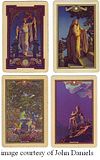
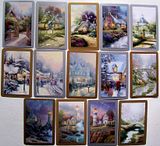
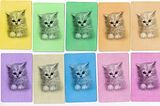
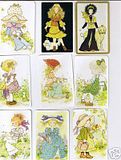
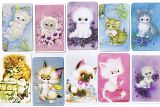
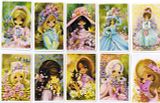
3 comments:
hello,
I am the French webmaster of a Sarah Kay site http://membres.lycos.fr/edithgreg .
I saw that you had some cards with Sarah Kay illustrations. I would like to know if you can scan them with a higher quality.
Thank you for your help!
Best regards,
Edith
grandsiteskay(a)aol.com
Nice information; precise and to the point. you seem to know what you're talking about, and enjoy it, and that's refreshing. thanks for the information. very helpful.
just a note everyone, this blog is no longer active, i have updated and revamped it so check it out - unfortunately i can't sign into this one anymore as my email for this blog is no longer active. Search for blog swap-cards-and-more
and thank you francesca :)
Post a Comment